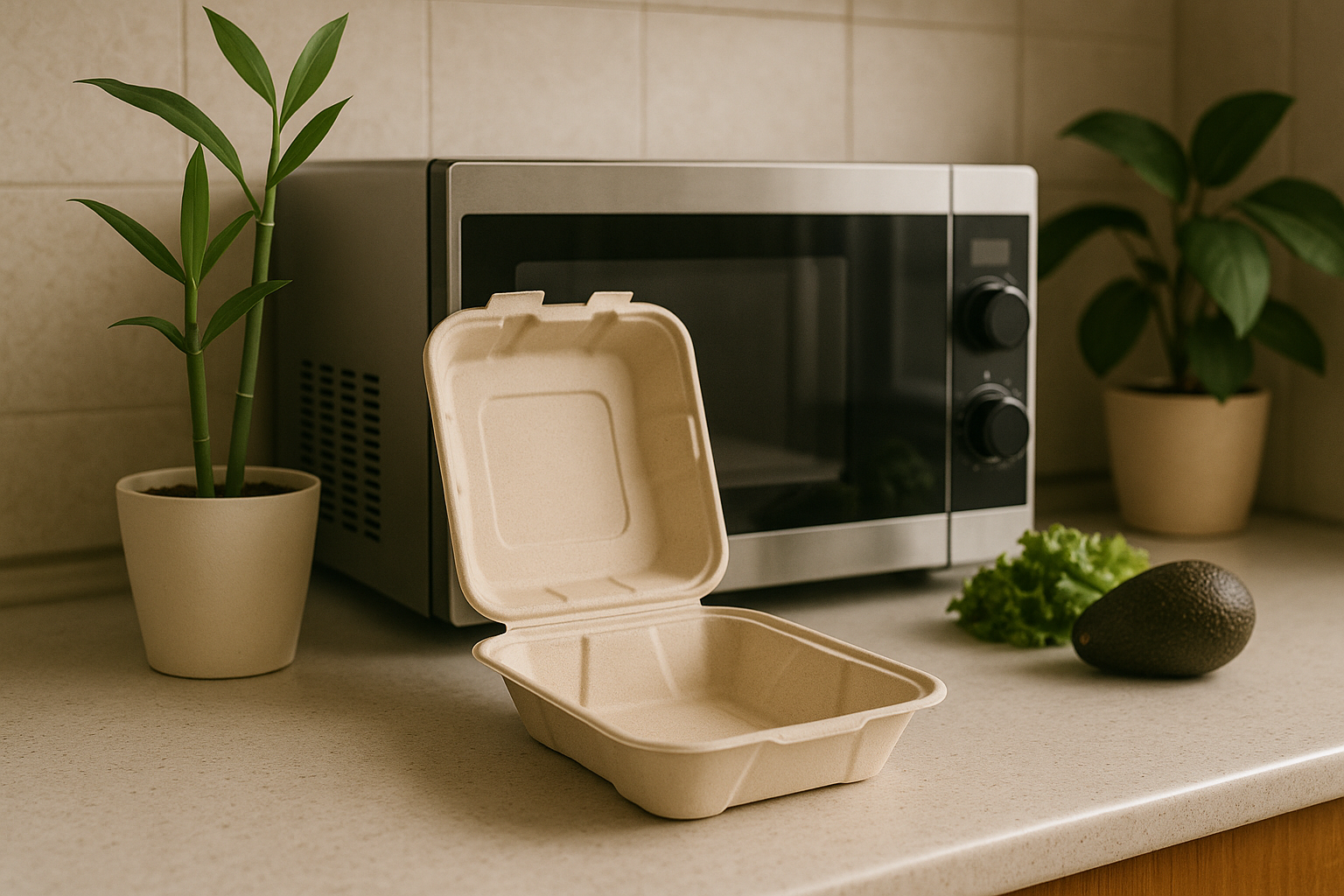
In today’s fast-paced world, the demand for convenient, eco-friendly, and safe food packaging solutions is skyrocketing. As consumers and food service businesses increasingly prioritize sustainability, disposable containers made from natural materials like bamboo pulp have emerged as a leading alternative. A common question arises: Are bamboo pulp takeout containers microwave safe? This article aims to provide a comprehensive answer, focusing on their impressive heat resistance and guiding you through their safe and effective use.
Bamboo pulp containers are microwave safe when rated to withstand up to 220℃.
To avoid damage or health risks, it’s important to know how and when to use them correctly.
What Are Bamboo Pulp Takeout Containers?
People want eco containers, but many don’t know what bamboo pulp really is.
Bamboo pulp containers are biodegradable and made from renewable plant-based materials.
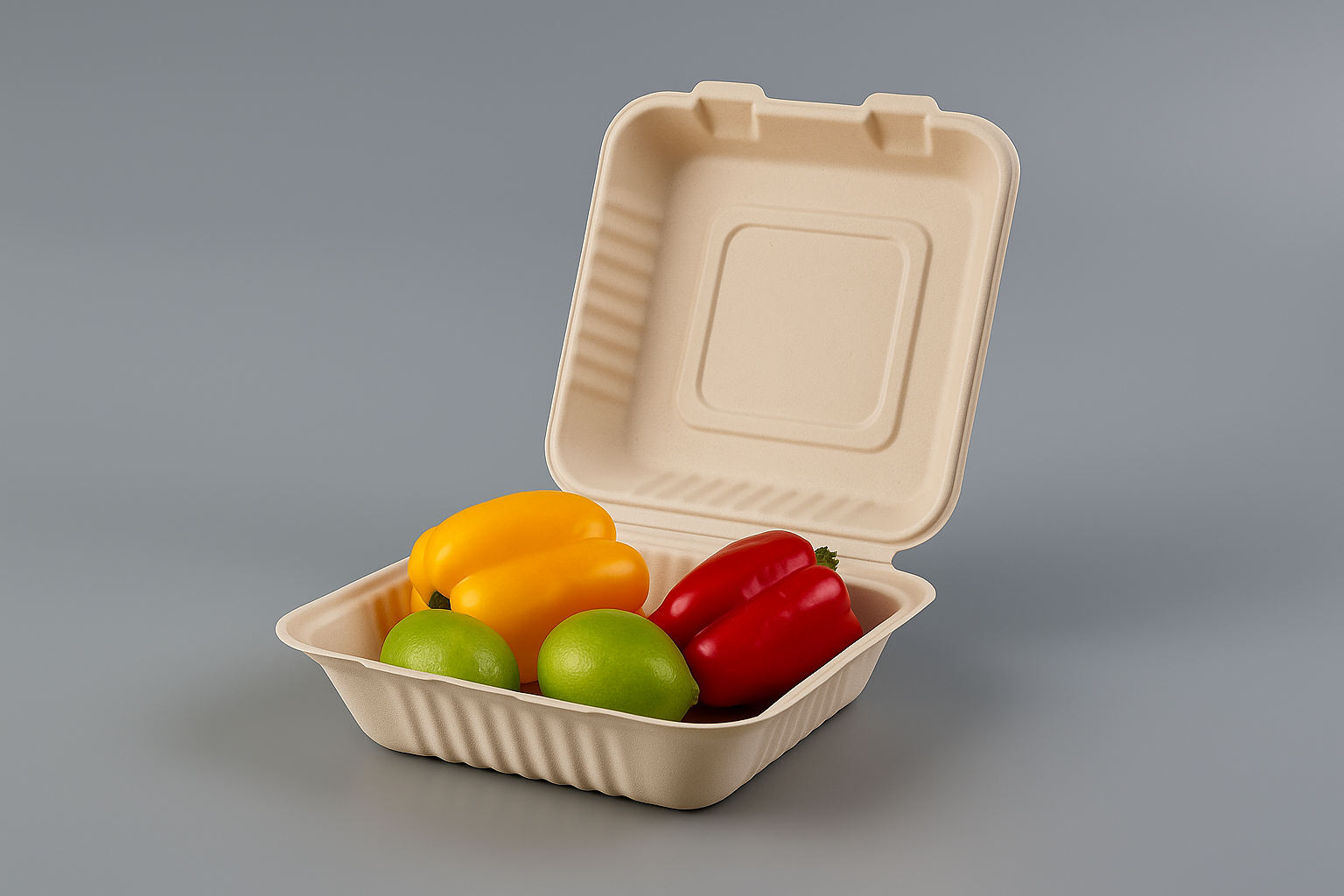
What Are They Made Of?
Bamboo pulp takeout containers are produced from finely processed bamboo fibers mixed with cassava starch or similar plant-based binders. These components are shaped and molded into strong, leak-resistant containers. Because bamboo grows quickly without much water or fertilizer, it’s a smart alternative to wood or plastic.
These containers are used across restaurants, food trucks, and delivery services. I started recommending them when I saw my customers shift away from plastic due to local regulations. Bamboo pulp gives them an eco option without sacrificing function.
Key Environmental Benefits
| Feature | Bamboo Pulp Containers |
|---|---|
| Biodegradable | Yes |
| Compostable | Yes |
| Material Source | Bamboo and cassava |
| Plastic-Free | 100% natural, no toxins |
| Fluorine-Free | Yes (no PFAS) |
| Applications | Takeout, catering, hot foods |
What Does “Microwave Safe” Really Mean?
Microwave safety is often misunderstood. Many assume all containers are heatproof.
Microwave-safe containers do not release toxins or deform when heated.
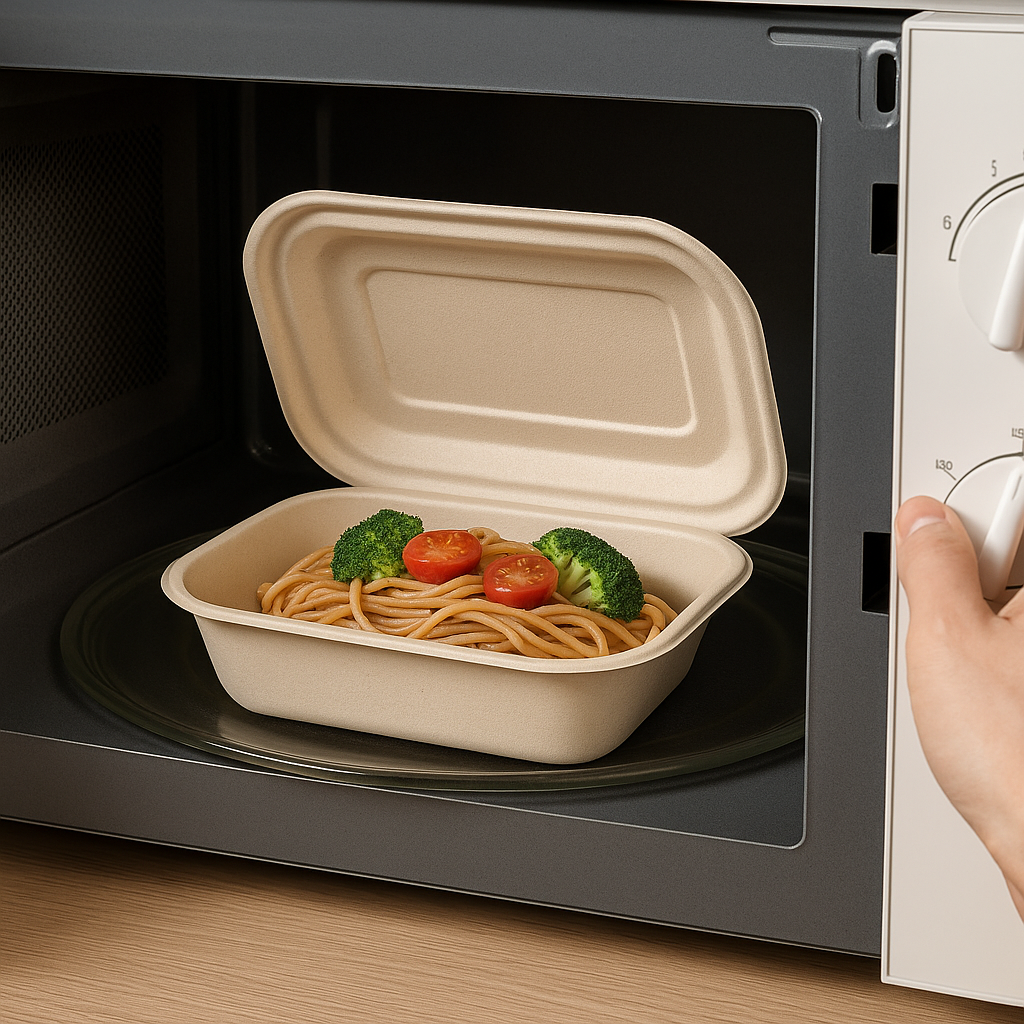
Understanding the Term
Being microwave safe means the container will not melt, crack, or release harmful substances under microwave conditions. For food service professionals, this matters because customers often reheat food without transferring it to another dish.
Bamboo pulp containers designed for this purpose can handle microwave temperatures up to 220℃. That’s well above the heat limits of many common materials.
Material Comparison
| Material | Max Heat Tolerance | Microwave Safe | Notes |
|---|---|---|---|
| Bamboo Pulp | Up to 220℃ | Yes (short use) | Stable, natural, fluorine-free |
| Plastic (PP, PET) | ~120℃ | Yes | Can warp or leach chemicals |
| Paper | ~100℃ | Sometimes | Often needs plastic lining |
| Bagasse | 100℃ | Yes | May contain added fluorine (PFAS) |
| Solid Bamboo | Low | No | Not microwave friendly |
| Aluminum | >200℃ | No | Sparks in microwave |
Do Bamboo Pulp Containers Actually Withstand Microwave Heat?
Even with high ratings, real performance matters.
Bamboo pulp containers can resist up to 220℃ for short microwave use.
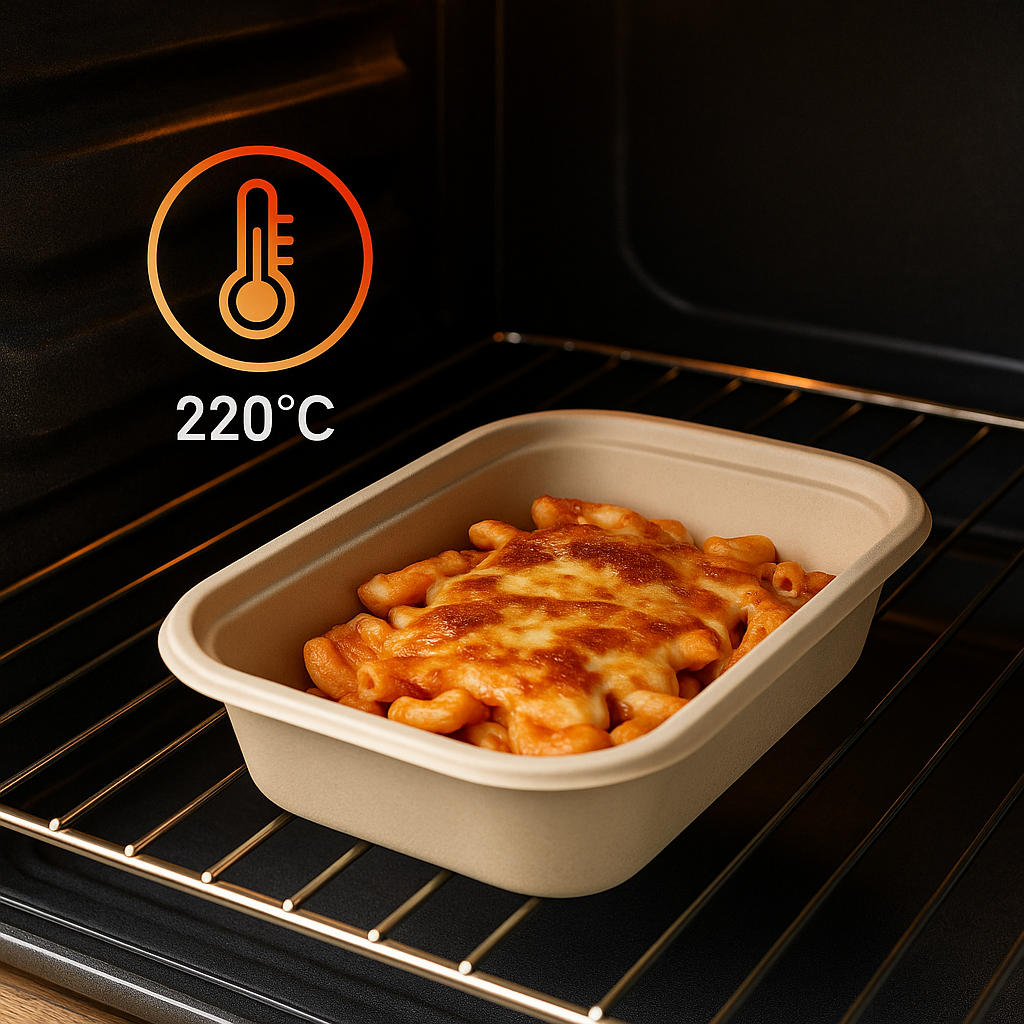
How They Handle the Heat
What makes bamboo pulp containers different is the way they’re made. When natural starches and fibers are processed and molded with heat, they create a network that resists further thermal damage. Some containers also get an added coating layer for water and oil resistance.
This construction keeps containers strong when reheating soups, rice, or pasta. However, repeated long exposure, or heating high-oil foods too long, can still cause minor deformation.
Tested and Certified
| Certification/Test Type | Purpose |
|---|---|
| Heat Resistance Test (220℃) | Confirms high temp durability |
| FDA or LFGB Certification | Verifies food safety standards |
| Oil & Water Resistance | Checks for leak protection |
| Microwave Simulation | Confirms stability under heating |
At PANABAM, we ensure that every batch of our bamboo pulp containers goes through third-party laboratory testing before shipment. These reports include heat resistance, food safety, and migration test results. We know our clients often need to meet strict regulatory standards, especially in markets like the EU, North America, and Japan. That’s why we don’t just claim compliance — we prove it. We share complete documentation with our B2B clients so they can move forward with confidence, knowing our products are both safe and certifiable.
What Are the Risks of Microwaving Bamboo Pulp Containers?
Like any material, overuse can damage bamboo pulp.
Too much heat or wrong usage can cause cracks, leaks, or warping.
Common Risks
Even strong containers can fail under certain conditions. If you microwave a container for more than 10 minutes, especially when empty or filled with greasy food, it may lose shape. Acidic foods (like tomato sauce) can also weaken coatings during prolonged heat.
I often suggest clients run small-scale internal tests before launching microwave-included packaging services.
Precaution Table
| Risk Factor | Result | Recommendation |
|---|---|---|
| Overheating | Cracks or softening | Keep time below 5–7 minutes |
| Empty microwaving | Rapid breakdown | Always heat food with content inside |
| High oil/acidity foods | Weakens the structure | Use microwave-safe plate for heating |
| No testing label | Unsafe materials | Choose certified products only |
How Should We Use Bamboo Pulp Containers in the Microwave?
Proper use extends product life and prevents damage.
Follow labeled heating times, avoid overheating, and store dry.
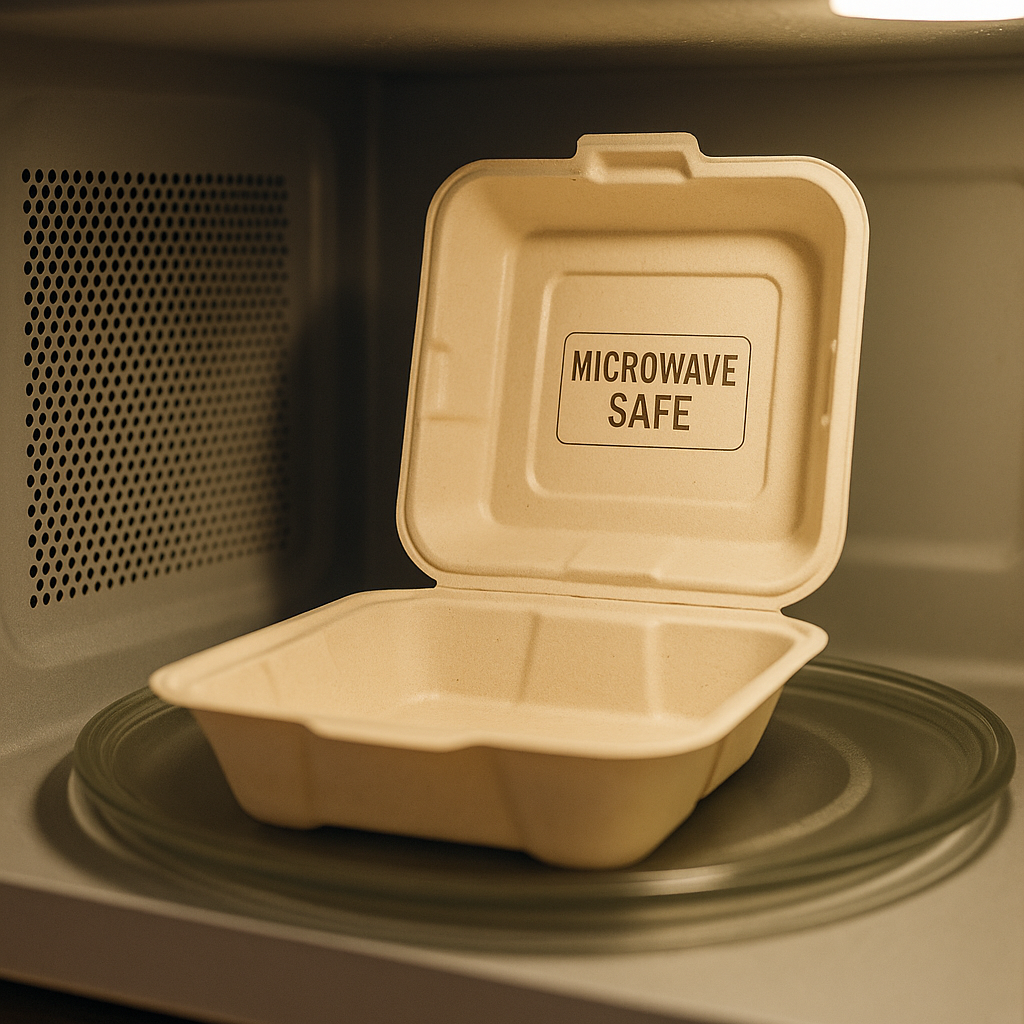
Smart Usage Tips
I often tell clients to read the packaging label. Certified containers usually say "Microwave Safe up to 220℃" with instructions like "Reheat for under 5 minutes." That small detail avoids 90% of returns or customer complaints.
If there’s no label, I recommend heating the food separately, then transferring it for serving. It takes one extra step, but it helps preserve both the food and the container.
Safe Use Guidelines
| Best Practice | Why It Works |
|---|---|
| Heat food under 5–7 min | Prevents breakdown |
| Avoid direct oily foods | Coatings may degrade |
| Never heat empty container | Risk of material failure |
| Confirm microwave label | Ensures safe design |
| Store in dry, cool space | Keeps product shelf-stable |
How Do Bamboo Pulp Containers Compare to Other Options?
Buyers often ask me how bamboo pulp measures up to traditional containers.
Bamboo pulp balances heat resistance, sustainability, and price better than many alternatives.
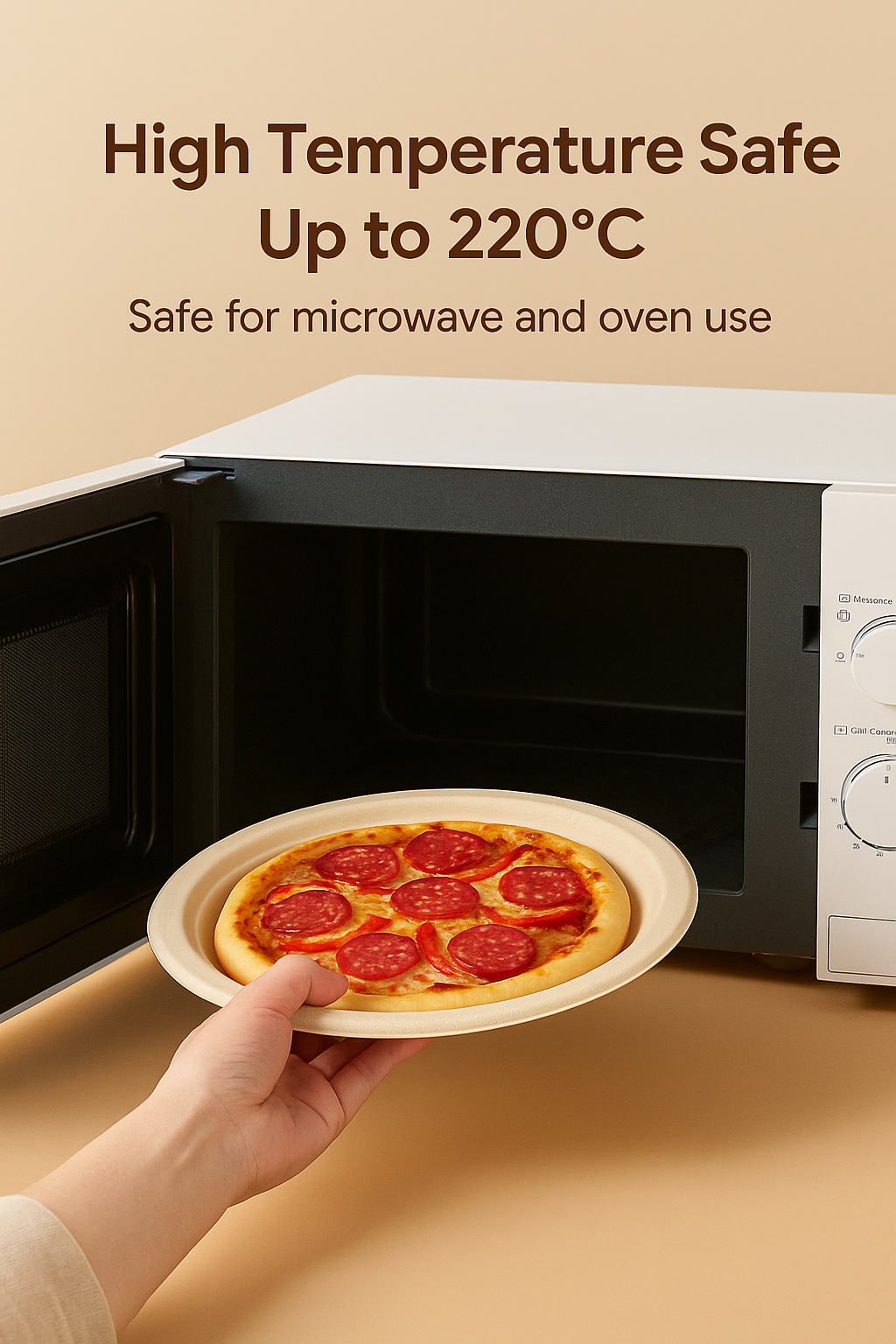
Performance Breakdown
| Container Type | Heat Resistance | Microwave Safe | Environmental Profile | Price Range | Best Use Cases |
|---|---|---|---|---|---|
| Bamboo Pulp Boxes | Up to 220℃ | Yes | Natural fiber, fluorine-free, compostable | Medium | Hot food, delivery, catering |
| Plastic Containers | ~120℃ | Yes | Non-biodegradable | Low | Low cost, fast food chains |
| Paper Containers | ~100℃ | Varies | May include plastic linings | Low | Light snacks, dry items |
| Bagasse Containers | 100℃ | Yes | Compostable but may use PFAS coating | Medium | Good performance but check ingredients |
| Solid Bamboo | Low | No | Premium, not microwave safe | High | Upscale serving, non-microwave uses |
| Aluminum Containers | >200℃ | No | Recyclable metal | Medium | Oven use, not microwave-safe |
| Palm Leaf Containers | ~140℃ | Yes | Natural, handmade | High | Rustic settings, hot food |
Many bagasse containers on the market are coated with PFAS (per- and polyfluoroalkyl substances), also known as fluorinated compounds. These are added for oil resistance but raise health and regulatory concerns. In contrast, bamboo pulp containers—like those produced by PANABAM—can achieve oil resistance using natural, fluorine-free methods.
How Do I Know If a Product Is Microwave Safe?
Not every "eco" label guarantees safety under heat.
Check for heat resistance certification and clear microwave-safe labeling.
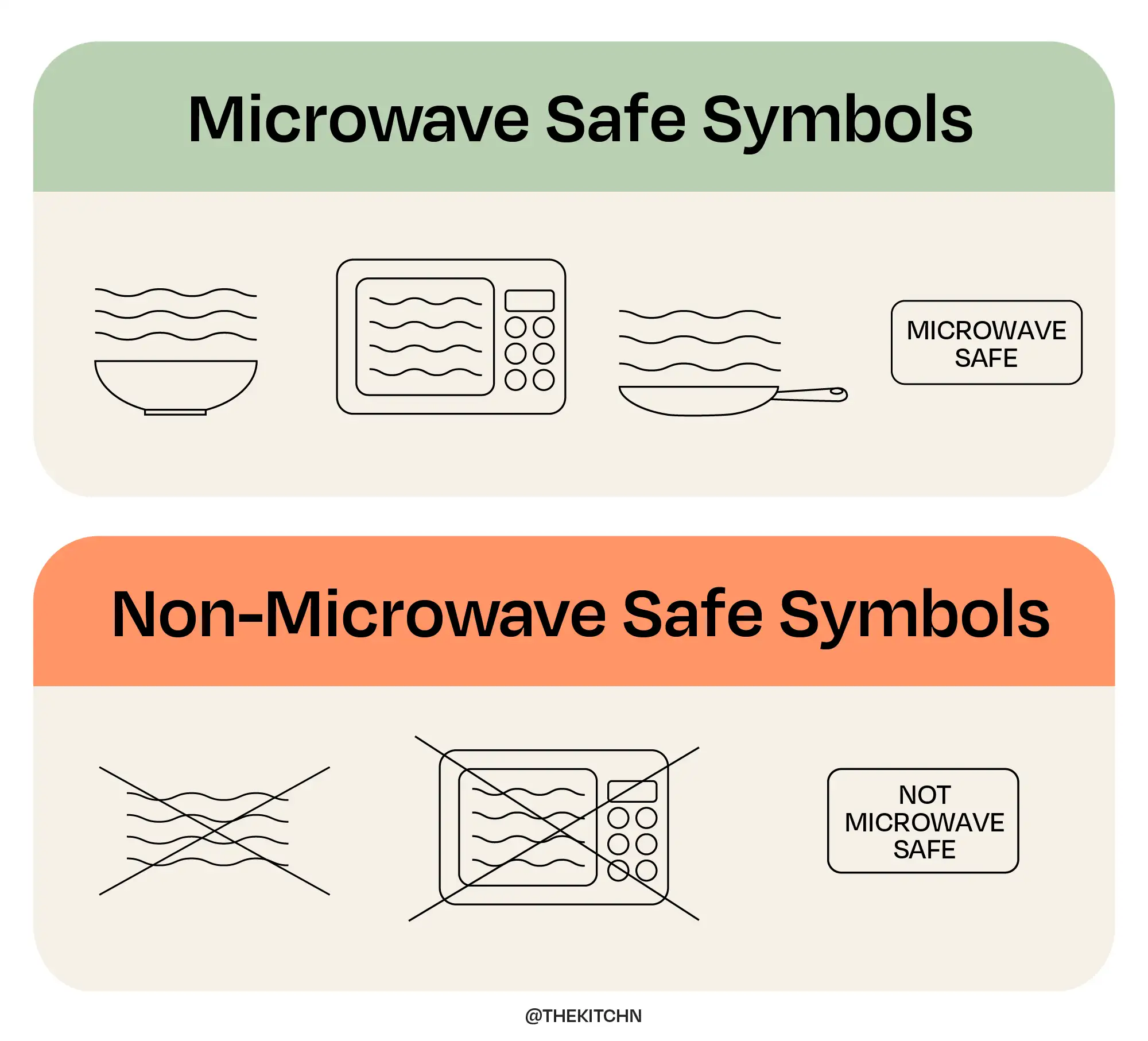
What I Look For When Buying
Before I source a container, I request the heat test report. If a factory can’t provide it, I move on. Good suppliers like PANABAM include this with their technical files. It helps buyers compare options with confidence.
The right suppliers are consistent, certified, and upfront about their specs.
What Do Clients Say About Microwave Safety?
Feedback helps validate claims beyond lab reports.
Global food brands report reliable microwave use with certified bamboo pulp containers.
Success Stories
A U.S.-based wedding caterer told me their customers love the natural look and how the containers stay intact when reheated. One coffee chain in Australia said bamboo pulp containers replaced all their lined paper boxes and held hot paninis without any collapse.
A Japanese meal delivery service tested PANABAM’s pulp containers and gave great feedback on both durability and appearance. These cases help us improve packaging instructions and performance with every new order.
Conclusion
Bamboo pulp containers, certified up to 220℃ and fluorine-free, offer a safe, eco-friendly microwave option when used responsibly.
FAQ
1. Are bamboo pulp takeout containers microwave safe?
Yes, high-quality bamboo pulp containers from reputable manufacturers are generally safe for short-term microwave reheating. They can typically withstand microwave temperatures up to 220°C when used according to guidelines.
2. How long can I microwave bamboo pulp containers safely?
It’s best to keep microwaving times short, usually under 10–15 minutes, to avoid any risk of warping or degradation. Always follow the manufacturer’s recommended heating duration.
3. Can I microwave any bamboo pulp container?
No. Only use bamboo pulp containers explicitly labeled as “microwave safe” with certification from credible authorities (e.g., FDA, BPI). Avoid heating containers without clear microwave-safe markings.
4. Will microwaving bamboo pulp containers release harmful chemicals?
No. Bamboo pulp containers made with natural plant fibers and binders do not contain harmful resins like melamine, so they do not release toxic substances under normal microwave use.
5. Are bamboo pulp containers suitable for reheating oily or acidic foods?
Microwaving highly acidic or very oily foods for prolonged periods is not recommended, as it may affect container integrity over time.
6. How can I tell if my bamboo pulp container is microwave safe?
Look for a microwave-safe label or certification on the packaging. You can also perform a simple test:
👉 Place a cup of water in the container and microwave for 30 seconds.
If the container stays cool while the water heats, it’s likely microwave safe.
7. How do bamboo pulp containers compare to other materials in microwave safety?
Compared to plastics (safe up to ~120°C), paper, bagasse, solid bamboo, aluminum, and palm leaf containers, bamboo pulp containers offer superior heat resistance (up to 220°C) and remain stable without leaching harmful chemicals.
8. Can bamboo pulp containers be reused and microwaved multiple times?
While bamboo pulp containers are designed primarily for single use, short-term repeated microwaving is possible if the container remains intact and clean. However, performance may degrade with repeated reheating.
9. What precautions should I take when microwaving bamboo pulp containers?
- Avoid microwaving empty containers
- Control heating time
- Do not exceed recommended temperatures
- Avoid prolonged heating of fatty or highly acidic foods
10. Where can I find certified microwave-safe bamboo pulp containers?
Purchase from reputable suppliers who provide testing reports and certifications (e.g., PANABAM).
Always verify product labeling and request technical data on microwave safety and heat resistance.

Ann
Hi, I’m Ann, and with over 5 years of experience in the foodservice industry, I’ve had the pleasure of working with restaurants and catering businesses to develop eco-friendly, tailored solutions that help you thrive in today’s green economy. I’m passionate about sustainability and committed to providing high-quality products that align with your values.
If you’re looking to make the switch to eco-friendly, sustainable tableware, I’m here to help! Reach out today, and let’s explore how we can support your business’s goals while contributing to a healthier planet.

